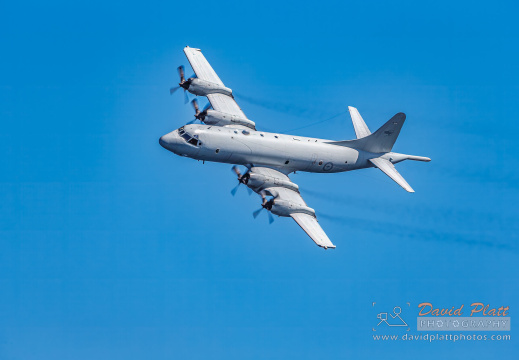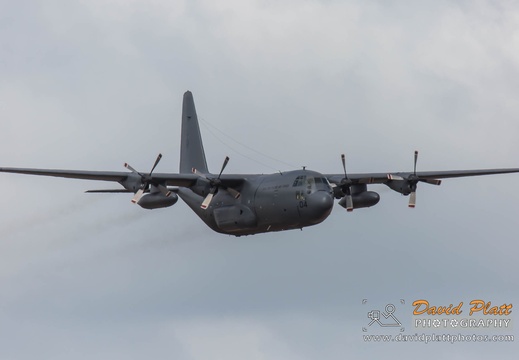
Lockheed C130 Hercules
The Lockheed C-130 Hercules is an American four-engine turboprop military transport aircraft designed and built originally by Lockheed (now Lockheed Martin). Capable of using unprepared runways for takeoffs and landings, the C-130 was originally designed as a troop, medevac, and cargo transport aircraft. The versatile airframe has found uses in a variety of other roles, including as a gunship (AC-130), for airborne assault, search and rescue, scientific research support, weather reconnaissance, aerial refueling, maritime patrol, and aerial firefighting.
Australia's first Hercules was in 1958, since then Australia has operated 48 Airframes, Currently there are 12 C-103J'a in service with the RAAF.
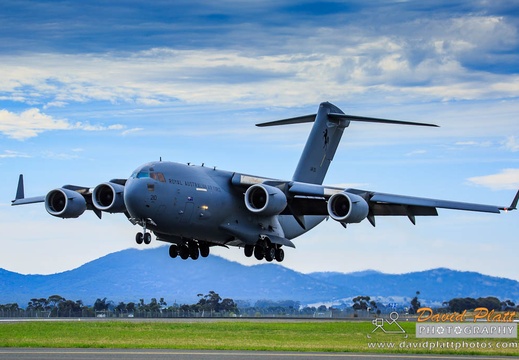
Lockheed C17 Globemaster
The McDonnell Douglas/Boeing C-17 Globemaster III is a large military transport aircraft that was developed for the United States Air Force (USAF) from the 1980s to the early 1990s by McDonnell Douglas. The C-17 carries forward the name of two previous piston-engined military cargo aircraft, the Douglas C-74 Globemaster and the Douglas C-124 Globemaster II. The C-17 commonly performs tactical and strategic airlift missions, transporting troops and cargo throughout the world; additional roles include medical evacuation and airdrop duties. It was designed to replace the Lockheed C-141 Starlifter, and also fulfill some of the duties of the Lockheed C-5 Galaxy.
The Royal Australian Airforce currently operates 8 Aircraft of this type.
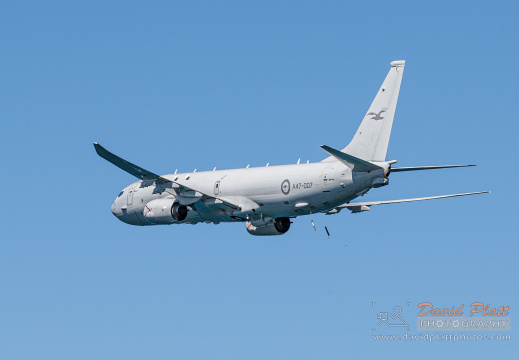
P-8A Poseidon
The P-8A Poseidon is Australia’s proven multi-mission maritime patrol aircraft. No. 92 Wing currently commands 12 P-8A aircraft which are operated by No. 11 and No. 292 Squadrons at RAAF Base Edinburgh. The P-8A Poseidon has deployed on a vast number of operations and exercises since its first arrival in 2016, ratifying its high capability to generate effects in its primary roles of: anti-submarine warfare anti-surface warfare search and rescue maritime intelligence, surveillance and reconnaissance overland intelligence, surveillance and reconnaissance.
Based on the commercial design of Boeing's 737-800, the P-8A is built specifically as a military aircraft and has been substantially modified to include: a weapons bay under wing and under fuselage hard points for weapons sonobuoy deployment system increased structural strength for low level operations (down to 200ft).
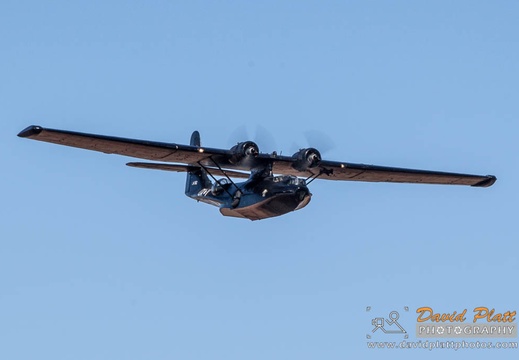
PBY Catalina
The Consolidated PBY Catalina is a flying boat and amphibious aircraft that was produced in the 1930s and 1940s.
The last military PBYs served until the 1980s. As of 2021, 86 years after its first flight, the aircraft continues to fly as a waterbomber (or airtanker) in some parts of the world.
Australia has one Airworthy Catalina which is operated by the Historical Aircraft Association . https://hars.org.au/
In Australian service, the Catalina is best known for its service during WWII as “Black Cats” and for flying the Qantas “Double Sunrise” service. In the role of the Black Cat, the Catalina operated from Australia into South-East Asia at low level at night, mining harbours and supporting “Z-Force”, the precursor to the SAS. As can be imagined, such operations were extremely dangerous.
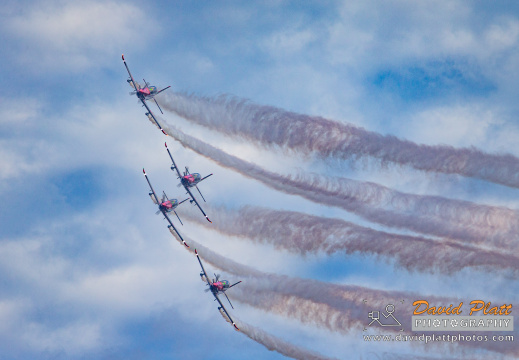
Pilatus PC21
The Pilatus PC-21 is a turboprop-powered advanced trainer with a stepped tandem pressurised cockpit. It is manufactured by Pilatus Aircraft of Switzerland.
It is capable of sustained low-level speeds over 320 knots, and hydraulically assisted ailerons and roll spoilers can produce fighter-like rates of roll in excess of 200 degrees per second.
It is the Australian Airforces Primary Training Aircraft. It is also used by the Royal Australian Air Force's aerobatic display team, The Roulettes.
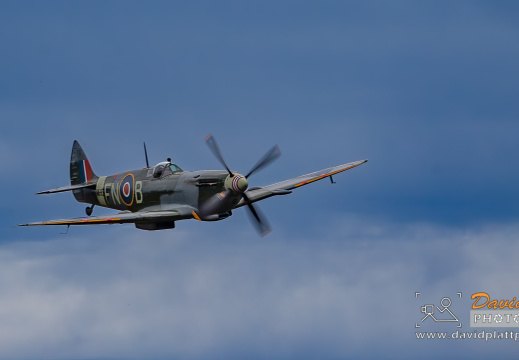
Supermarine Spitfire
The Supermarine Spitfire is a British single-seat fighter aircraft that was used by the Royal Air Force and other Allied countries before, during, and after World War II. Many variants of the Spitfire were built, using several wing configurations. It was also the only British fighter produced continuously throughout the war. The Spitfire continues to be popular among enthusiasts; around 70 remain airworthy, and many more are static exhibits in aviation museums throughout the world.
The Spitfire was designed as a short-range, high-performance interceptor aircraft by R. J. Mitchell, chief designer at Supermarine Aviation Works, which operated as a subsidiary of Vickers-Armstrong from 1928. Mitchell pushed the Spitfire's distinctive elliptical wing with cutting-edge sunken rivets (designed by Beverley Shenstone) to have the thinnest possible cross-section, helping give the aircraft a higher top speed than several contemporary fighters, including the Hawker Hurricane. Mitchell continued to refine the design until his death in 1937, whereupon his colleague Joseph Smith took over as chief designer, overseeing the Spitfire's development throughout its multitude of variants.
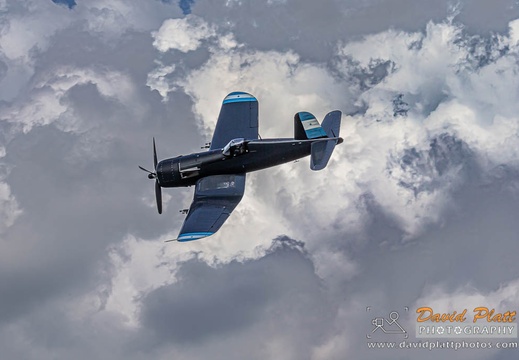
Vought f4u Corsair
The Vought F4U Corsair is an American fighter aircraft which saw service primarily in World War II and the Korean War. This aircraft is sometimes referred to as "The Whistling Death"
Designed and initially manufactured by Chance Vought, the Corsair was soon in great demand; additional production contracts were given to Goodyear, whose Corsairs were designated FG, and Brewster, designated F3A.
The Corsair was designed and operated as a carrier-based aircraft, and entered service in large numbers with the U.S. Navy in late 1944 and early 1945. It quickly became one of the most capable carrier-based fighter-bombers of World War II. Some Japanese pilots regarded it as the most formidable American fighter of World War II and its naval aviators achieved an 11:1 kill ratio. Early problems with carrier landings and logistics led to it being eclipsed as the dominant carrier-based fighter by the Grumman F6F Hellcat, powered by the same Double Wasp engine first flown on the Corsair's initial prototype in 1940.
